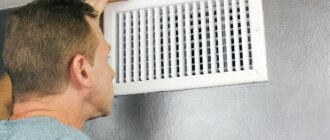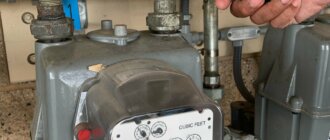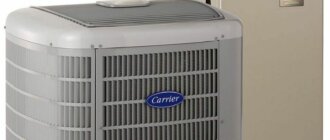Is Your HVAC System Compatible With a New Thermostat?
Are you experiencing inconsistent temperatures in your home or office despite having a functional HVAC system? The culprit may be an outdated thermostat.
Upgrading to a new thermostat may seem like a minor expense, but it can make a significant difference in the efficiency and effectiveness of your heating and cooling systems.
However, before making the switch, it’s crucial to determine whether your current HVAC system is compatible with the new thermostat you have in mind. In this blog post, we will explore how to check compatibility between HVAC systems and thermostats so that you can upgrade without any hiccups!
Understanding Your HVAC System
Having a basic understanding of your HVAC system is essential in determining if it’s compatible with a new thermostat. Heating, ventilation, and air conditioning (HVAC) systems are responsible for maintaining comfortable indoor temperatures and air quality while regulating humidity levels.
There are different types of HVAC systems available in the market, including central heating and cooling systems, heat pumps, ductless mini-split systems, and geothermal heating and cooling.
All these systems work by drawing outdoor air into the unit where it is either heated or cooled before being distributed throughout the house via ductwork or directly through wall-mounted units.
Each type of HVAC system has its unique features that determine how they function. For instance, some have multiple zones that allow you to control different areas independently. Understanding your specific HVAC system will help you make informed decisions when choosing a new thermostat.
Types of HVAC systems
There are several types of HVAC systems, each designed to meet specific needs and preferences. One common type is the split system, which consists of an indoor unit that houses the evaporator coil and blower, and an outdoor unit containing the compressor and condenser coil.
Another type is a packaged system, which combines all components in one cabinet installed outdoors or on a rooftop. This makes it more compact than other systems.
A ductless mini-split system is another option for homes without ductwork. It has an outdoor unit connected to one or more indoor units through tubing carrying refrigerant and power lines.
Geothermal heat pumps use the ground as a source of heating or cooling by circulating water through underground pipes into a heat pump located inside your home.
There are hybrid HVAC systems that combine two different fuel sources such as natural gas with electricity. These provide greater flexibility with energy usage while reducing overall costs.
When selecting an HVAC system, consider factors like efficiency ratings, maintenance requirements, installation costs, and compatibility with your home’s infrastructure.
How HVAC systems work
HVAC systems are designed to provide comfort in both residential and commercial buildings. These systems work by controlling indoor temperature, humidity levels, and air quality. The process begins with the thermostat, which senses the room temperature and sends a signal to the HVAC unit.
Once the signal is received, the HVAC system kicks into gear by drawing in outdoor air through an intake vent. This air is then filtered before being sent through a heat exchanger or cooling coil depending on whether heating or cooling is needed.
The heat exchanger or cooling coil then changes the temperature of the air before it’s distributed throughout your home via ductwork. In addition to heating and cooling your home, some HVAC systems can also control humidity levels by removing excess moisture from indoor air.
These complex systems operate efficiently when all components are working correctly. Therefore routine maintenance checks should be done periodically to ensure that everything runs smoothly without any issues or setbacks.
Different Types of Thermostats
There are three main types of thermostats: non-programmable, programmable, and smart. Non-programmable thermostats are the simplest of the bunch. They allow you to manually set a temperature but don’t give you any scheduling options.
Programmable thermostats take things up a notch by allowing you to set different temperatures for different times of the day. For example, you can program your thermostat to be cooler during the night when you’re sleeping and warmer in the morning when you wake up.
Smart thermostats take things even further with features like learning algorithms that adapt to your behavior over time and remote control via smartphone apps. Some models also integrate with voice assistants like Amazon Alexa or Google Assistant, allowing you to adjust your thermostat using voice commands.
Each type of thermostat has its own advantages and disadvantages depending on your needs and lifestyle. It’s important to do some research before making a decision so that you can find a thermostat that fits both your HVAC system and your preferences.
Benefits of Upgrading Your Thermostat
Upgrading your thermostat can bring a lot of benefits to your home, including increased comfort and energy efficiency. One major advantage is the ability to set specific temperatures for different times of the day or week with programmable and smart thermostats. This feature allows you to save money on energy bills by adjusting the temperature when no one is at home.
Another benefit is that upgrading your thermostat can help extend the lifespan of your HVAC system. When your thermostat communicates properly with your heating and cooling equipment, it ensures that they work together efficiently without putting too much strain on each other.
Smart thermostats take things a step further by learning from your behaviors, preferences, and schedule patterns over time. These devices offer remote access via smartphone apps so you can easily adjust settings while away from home.
In addition to these benefits, upgrading your thermostat also increases convenience as many newer models have easy-to-use touchscreens that display useful information like weather forecasts, indoor humidity levels, and more.
Upgrading your thermostat has numerous advantages such as enhancing comfort levels in homes alongside reducing power bills thus making it an excellent investment for any homeowner looking for long-term savings.
“Are you experiencing inconsistent temperatures in your home or office despite having a functional HVAC system? The culprit may be an outdated thermostat.”
Upgrading to a new thermostat may seem like a minor expense, but it can make a significant difference in the efficiency and effectiveness of your heating and cooling systems.
However, before making the switch, it’s crucial to determine whether your current HVAC system is compatible with the new thermostat you have in mind.
“Understanding your specific HVAC system will help you make informed decisions when choosing a new thermostat.”




